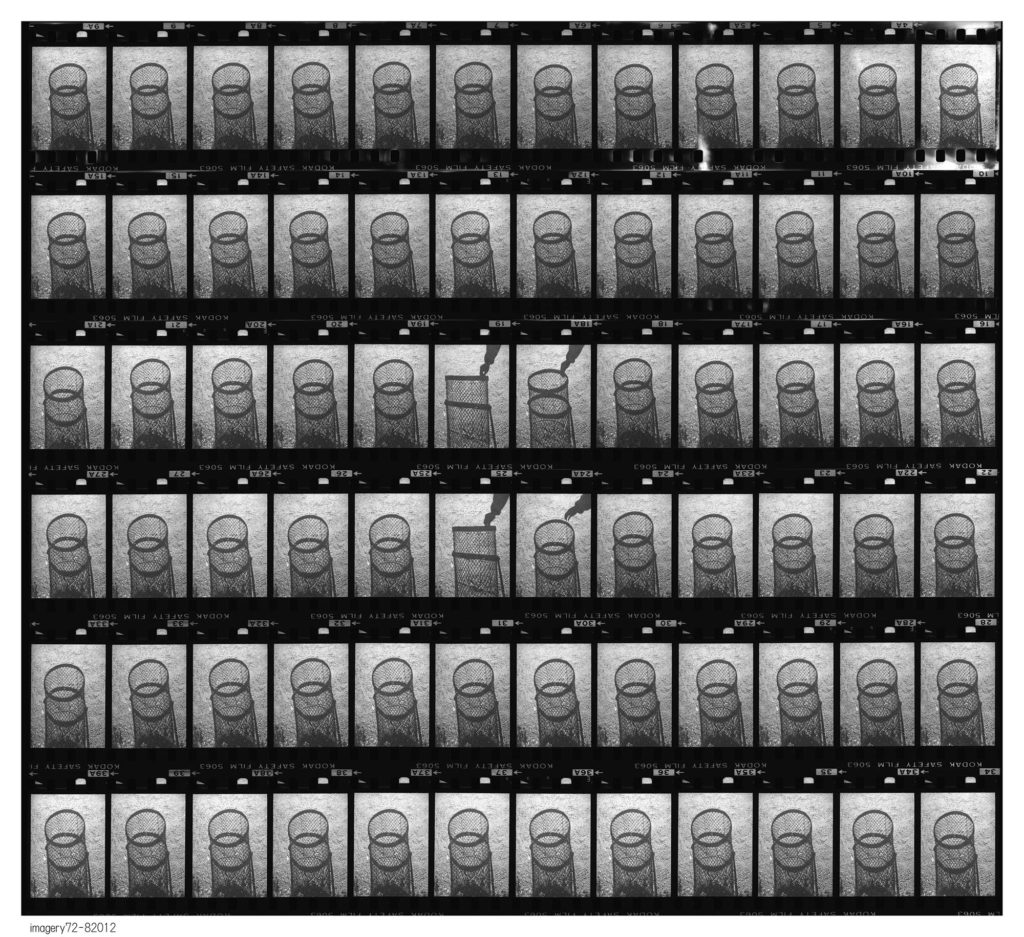<Related Exhibition>"MOMAT Collection"
June 4 - October 20, 2019
Participating artist: Yoshihiko Ito
The National Museum of Modern Art, Tokyo
Related Exhibitions

©Yoshihiko Ito
June 4 - October 20, 2019
The National Museum of Modern Art, Tokyo
3F
Room 9 – 1
Temporal Arrays: The Works of Ito Yoshihiko (Exhibit Date: June 4 – August 18, 2019)
When film negatives are placed on photo paper and printed at actual size, the result is called a “contact sheet.” When large-format film is used, the contact sheet can be appreciated as a work of art in its own right, but with small 35mm film, contact sheets are generally only used as a reference to decide which frames to enlarge. However, Ito Yoshihiko exhibited contact sheets, each containing a roll of 35mm film frames in the order they were shot, as finished works of art.
When the images, in the order they were shot, are arranged in a grid on a single picture plane, new vertical, horizontal, and diagonal relationships among frames emerge. While moving pictures replicate temporal sequences through continuous playback of continuously shot frames, Ito’s work can be seen as a completely different approach to conveying the passage of time.
What happens when an artist closely observes something happening over the course of time, and arranges the sequence on a single picture plane? In Room 11 on the 2nd floor are exhibited works that also address this issue, using a different approach from that of contact sheets.
2F
Room 11
Still? Moving?
Yoshihiko Ito
“Funeral”, “Park” (From the series of Patrone) (Exhibit Date: June 4 – August 18, 2019)
“Corridor”, “Trot” (From the series of Patrone) (Exhibit Date: August 20 – October 20, 2019)
Moving pictures are sequences of still pictures projected continuously. With more still images (frames) per second the image moves smoothly, and with fewer it moves jerkily. However, even when there are so few that the subject appears and disappears, the viewer’s mind connects the images and interprets them as movement. Iji dozu(lit. “different time, same image,” a technique of showing multiple images of the same figure on the same page), used in some picture scrolls, utilizes this human cognitive tendency to show action (although it is no longer in the realm of moving pictures.)
In some picture scrolls, the scene itself appears to move. If you view it in the manner originally intended, unrolling it with your left hand and rolling it up with your right, you can enjoy it like a film, and the higher the quality of the picture scroll, the more brilliant the “camerawork” appears to be. Such techniques of making still images appear to move were later developed further in manga.
In this room, we present works that can be viewed in this way. This special exhibit draws its title from the book 12th-Century Animation: Cinematic and Animation Effects in National Treasure Picture Scrolls by the late, great animation director Takahata Isao, whose retrospective exhibition will be held from July 2 to October 6 on the first floor of the museum.